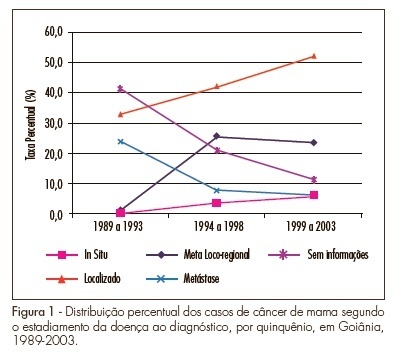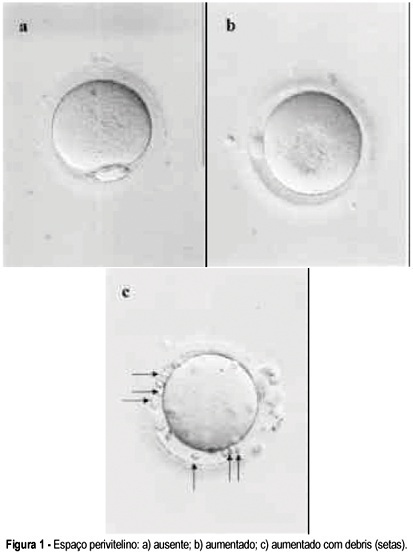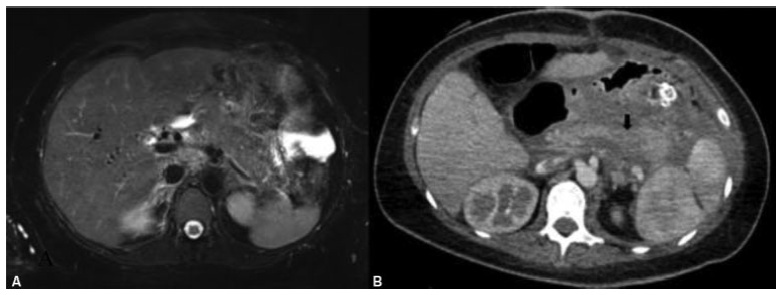Summary
Summary
Revista Brasileira de Ginecologia e Obstetrícia. 2011;33(5):219-224
DOI 10.1590/S0100-72032011000500003
To compare the sexual function of healthy adult pregnant women with that of gestational diabetes patients (GDM) in the third trimester. METHODS: This cross-sectional study enrolled two groups of women managed antenatal care clinics. Inclusion criteria were: maternal age .20 years, gestational age at least 28 weeks, being in a heterosexual relationship with the same partner for at least 6 months, and being able to read. We excluded women with a medical recommendation for sexual abstinence due to clinical or obstetric disorders; hypertension controlled through medications; pregnancy resulting from rape; absent or sexually unavailable partner in the last month; hospital admission in the last month; use of vaginal creams in the last 30 days; multiple pregnancy, regular use of alcohol or illicit drugs or use of medications that can interfere with sexual function. Eighty-seven patients fulfilled the selection criteria and were included in the study. The Sexual Quotient . Feminine Version (QS-F) questionnaire was used to assess sexual function. Student's t and X² tests were used to compare differences between groups and p<0.05 was considered significant. RESULTS: The mean gestational age of the participants was 34 weeks. There were no significant differences in the mean QS-F scores between groups (62.5 healthy vs 62.8 GDM women, p=0.9). Approximately half the participants (47 and 47.5% of the healthy and GDM women, respectively, p=0.9) had total scores up to 60, indicative of dysfunction in one of the assessed domains (desire, sexual satisfaction, arousal, orgasm, dyspareunia and vaginismus). CONCLUSIONS: The prevalence of sexual dysfunction was high among women in the third trimester of pregnancy and did not differ significantly between healthy women and women with GDM.
Summary
Revista Brasileira de Ginecologia e Obstetrícia. 2009;31(5):219-223
DOI 10.1590/S0100-72032009000500003
PURPOSE: To analyze the temporal changes of breast cancer staging at diagnosis among women living in Goiânia, Goiás, Brazil, between 1989 and 2003. METHODS: Retrospective and descriptive study in which the cases were identified from the Population-Based Cancer Registry of Goiânia for the period from 1989 to 2003. The variables studied were age, diagnostic method, topographic sublocation, morphology and breast cancer staging. Frequency analyses were carried out on the variables and means, and the medians for the age were determined. The SPSS® 15.0 software was used for statistical analyses. RESULTS: A total of 3,204 breast cancer cases were collected. The mean age was 56 years (sd±16 years). With regard to clinical staging, 45.6% of the cases were found to be localized in the breast, with an increased rate of 19.25% between the first and the third five-year period (p<0.001; CI 95%=0.14-0.23) and 10.2% of cases were with distant metastases. However, a reduction of 17.74% for metastatic cases in the same interval (p<0.001 e CI 95%=0.14-21) was observed. The in situ case rate was 0.2% in 1989-1993 and increased to 6.2% in 1999-2003 (p<0.001, IC95%=4.9-7.4). CONCLUSION: The diagnostic profile of breast cancer in the city of Goiânia is changing. Substantial increases in the number of early breast cancer cases are being found in relation to the number of advanced cases.

Summary
Revista Brasileira de Ginecologia e Obstetrícia. 2008;30(5):219-223
DOI 10.1590/S0100-72032008000500003
PURPOSE: to evaluate the toxicity of tacrolimus on embryonic development in rats treated during the tubal transit period. METHODS: sixty Wistar rats were distributed into four groups (15 animals each), which received different doses of tacrolimus through intragastric administration: (T1) 1.0 mg/kg/day, (T2) 2.0 mg/kg/day and (T3) 4.0 mg/kg/day. The control group (C) received distilled water. The rats were observed daily to detect clinical signs of toxicity. The treatments were performed from the first to the fifth day of pregnancy. The following maternal variables were analyzed: body, ovary, liver, and kidney weights, food intake, number of corpora lutea, implants, alive and dead fetuses, and implantation rates. The fetuses and placentae were weighed and the former were observed in order to detect external malformation. Statistical analysis was performed by one way: analysis of variance (ANOVA), folowed by the Dunnet test (alpha=0.05). RESULTS: there were no signs of maternal toxicity, such as body weight loss, decrease in food intake or in organ weights (p>0.05). There was also no significant difference among weights of fetuses (C: 1.8±0.6; T1: 2.2±0.5; T2: 1.9±0.5 and T3: 2.0±0.5 g) and placentae (C: 1,6±0.4; T1: 1.5±0.4; T2: 1.8±0.4 e T3: 1.6±0.4 g), with p>0.05; no external malformation was detected in the fetuses. CONCLUSIONS: the administration of tacrolimus to pregnant rats during the tubal transit period does not seem to generate any toxic effect to mother or embryo.
Summary
Revista Brasileira de Ginecologia e Obstetrícia. 2009;31(1):22-27
DOI 10.1590/S0100-72032009000100005
PURPOSE: to analyze complications, morbidity, mortality and survival rate in a group of patients with cervical cancer with central pelvic relapse after primary radiotherapy treatment. METHODS: retrospective study of a series of 16 cases of pelvic exenteration after primary radiotherapy treatment. Descriptive statistics, survival curve through Kaplan-Meier's method, and regression analysis to evaluate prognosis were performed. RESULTS: sixteen patients have undergone pelvic exenteration. Epidermoid carcinoma, IIb stage and undifferentiated grade were the most frequent conditions. Post-operatory tumor relapse occurred in half the cases. Eleven patients presented peri or post-surgical complications, the most frequent being pelvic infection, that of the surgical wound, and urinary fistulae. Global survival rate was 64.3%, with average follow-up of 11 months. Regression analysis did not detect any significant prognosis factor for the patient survival. CONCLUSIONS: the survival rate was 64.3%. No particular factor associated to poor prognosis has been found in the present series of cases.
Summary
Revista Brasileira de Ginecologia e Obstetrícia. 2012;34(1):22-27
DOI 10.1590/S0100-72032012000100005
PURPOSE: Evaluate the effects of ipriflavone during fetogenesis, since no studies have been conducted to assess its effect during this period. METHODS: 60 pregnant rats were divided randomly into four groups (n=15). G-control (1 mL of distilled water) and three groups treated intragastrically with ipriflavone from the 16th to the 20th post coitus (PC) day: G-300 (300 mg/kg), G-1,500 (1,500 mg/kg) and G-3,000 (3,000 mg/kg). The animals were weighed, anaesthetized intraperitoneally with xylazine and ketamine at doses of 180 mg/kg and 10 mg/kg, respectively, and sacrificed by total exsanguination on the 21st day. A complete blood count was performed and serum cholesterol, triglycerides, AST, ALT, urea, creatinine, and glucose were determined in pregnant rats. After laparotomy, the liver, kidneys, adrenals, spleen and ovaries were removed and weighed; fetuses and placentas were also weighed to obtain the average weight of the litters. Four fetuses (two males and two females) were chosen at random for the determination of the length and weight of brain, liver, kidneys and lungs. Statistical analysis: ANOVA followed by Dunnett's test. For raw data without normal distribution and homoscedasticity, we used the Kruskal-Wallis test followed by the Mann-Whitney test. Proportions were analyzed by the χ² test (p<0.05). RESULTS: Triglyceride levels (mg/dL) were: Control-G (138.8±21.8), G-300 (211.2±63.9) G-1,500 (251.5±65.2) G-3,000 (217.7±49.6); p<0.05. The body weight of fetuses (g) was: G-Control (male 3.3±0.3; female 3.1±0.3), G-300 (male 3.4±0.2; female 3.1±0.4), G-1,500 (male 3.5±0.3; female 3.2±0.3), G-3,000 (male 3.4±0.5; female 3.1±0.4). CONCLUSION: Ipriflavone did not cause maternal toxicity, but increased triglyceride levels and reduced hematocrit at higher doses. The body and organ weights of the fetuses did not change with dam treatment. There were no external malformations or fetal deaths.
Summary
Revista Brasileira de Ginecologia e Obstetrícia. 2006;28(4):220-226
DOI 10.1590/S0100-72032006000400003
PURPOSE: to verify the possibility of identifying oocytes that would result in a higher fertilization rate. METHODS: retrospective analysis of the fertilization rate after ICSI of 957 oocytes in metaphase II according to three morphology parameters: cytoplasm inclusions, thickness of the perivitelline space, and fragmentation of the first polar body. Oocytes were obtained from 115 cycles performed among 107 women attended at the "Centro de Reprodução Humana de Campinas", from April to December of 2004. For the statistical analysis of differences in the fertilization rate between 'normal' oocytes and those presenting each alteration, the chi2 test was used with confidence levels of 5 and 10%. RESULTS: no significant difference in fertilization rate was observed regarding characteristics of the polar body or thickness of the perivitelline space. Fertilization rate among oocytes with perivitelline space with debris was 14 percentage points lower than among oocytes with absent space (p=0.055) and the rate among oocytes with granular cytoplasm was seven percentage points lower than among oocytes with normal cytoplasm (p<0.10>0.05). CONCLUSIONS: the morphological parameters of oocytes currently being evaluated do not allow us to clearly distinguish those that would lead to a higher fertilization rate and could be used in clinical practice.

Summary
Revista Brasileira de Ginecologia e Obstetrícia. 2021;43(3):220-224
Acute pancreatitis is a rare condition in pregnancy, associated with a high mortality rate. Hypertriglyceridemia represents its second most common cause.We present the case of a 38-year-old woman in the 24th week of gestation with a history of hypertriglyceridemia and recurrent episodes of pancreatitis. She was admitted to our hospital with acute pancreatitis due to severe hypertriglyceridemia. She was stabilized and treated with fibrates. Despite her favorable clinical course, she developed a second episode of acute pancreatitis complicated by multi-organ dysfunction and pancreatic necrosis, requiring a necrosectomy. The pregnancy was ended by cesarean section, after which three plasmapheresis sessions were performed. She is currently asymptomatic with stable triglyceride levels. Acute pancreatitis due to hypertriglyceridemia represents a diagnostic and therapeutic challenge in pregnant women, associated with serious maternal and fetal complications. When primary hypertriglyceridemia is suspected, such as familial chylomicronemia syndrome, the most important objective is preventing the onset of pancreatitis.
